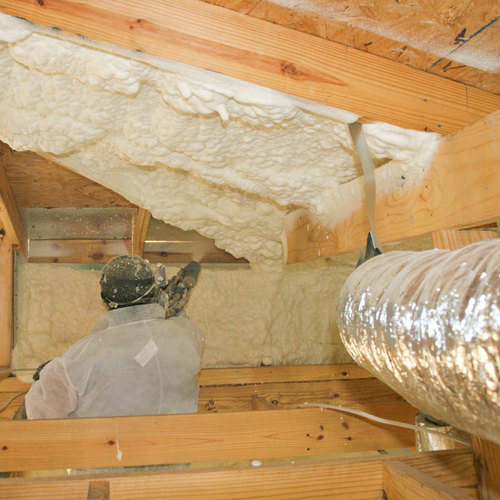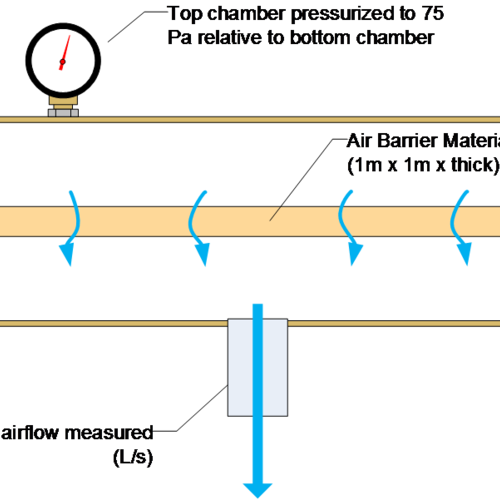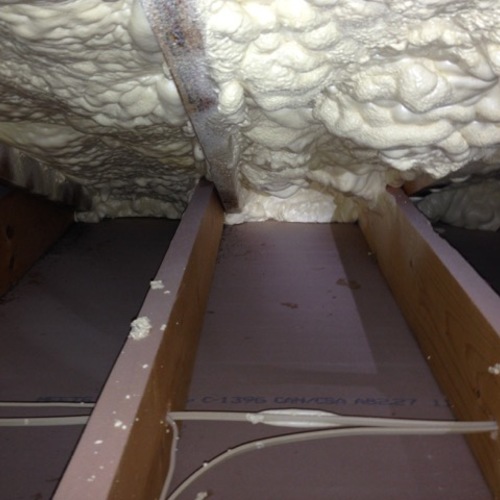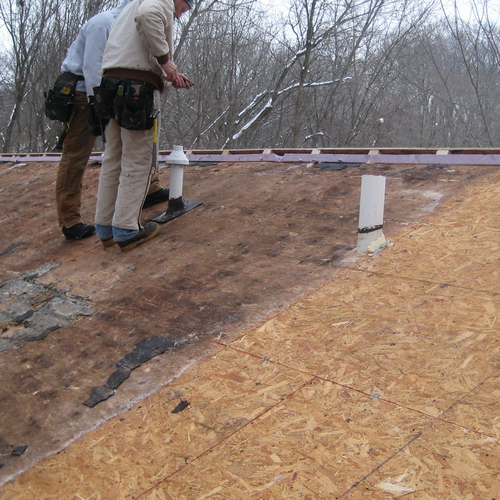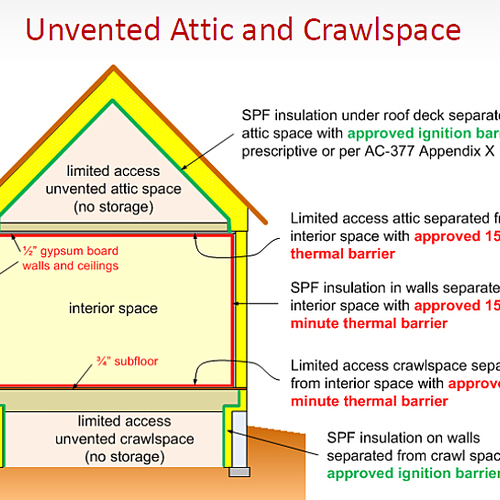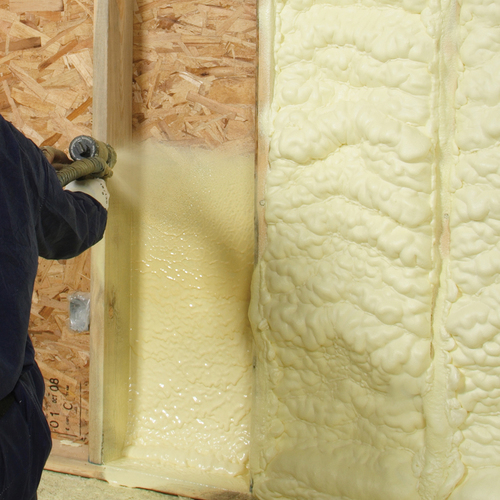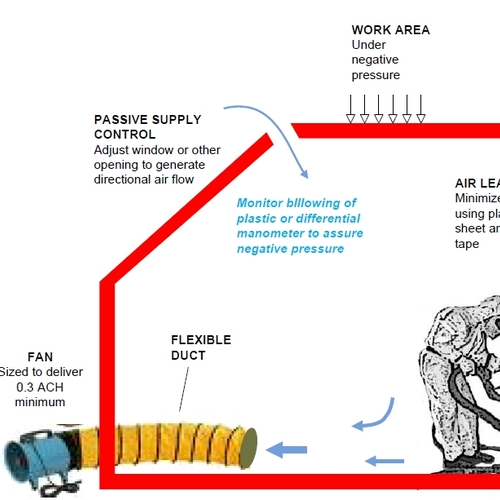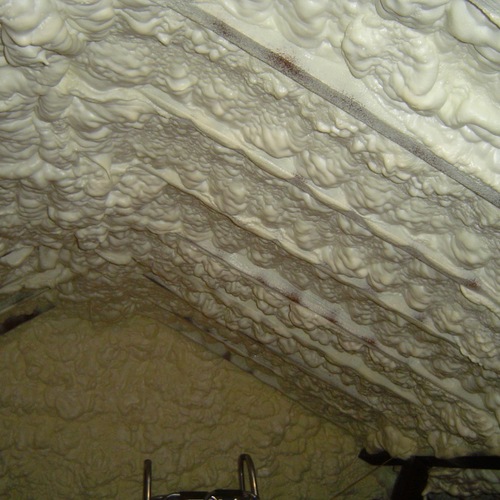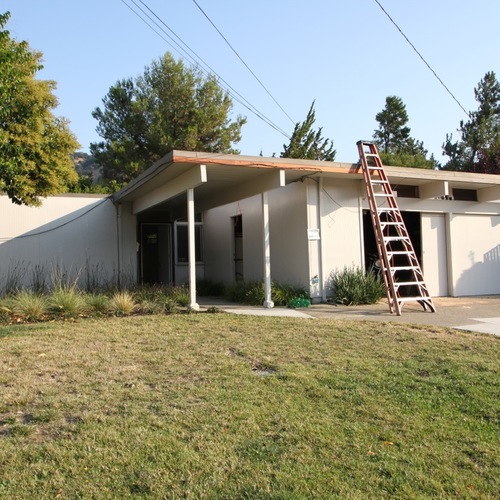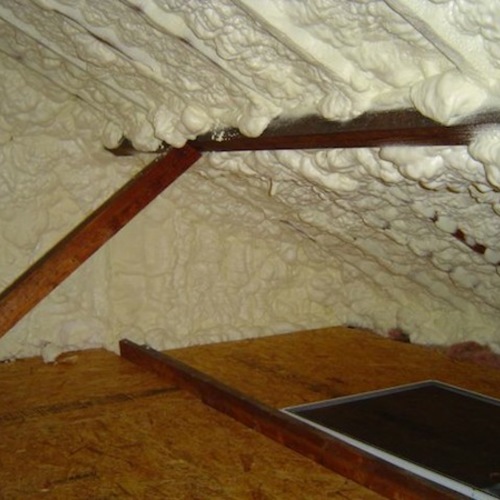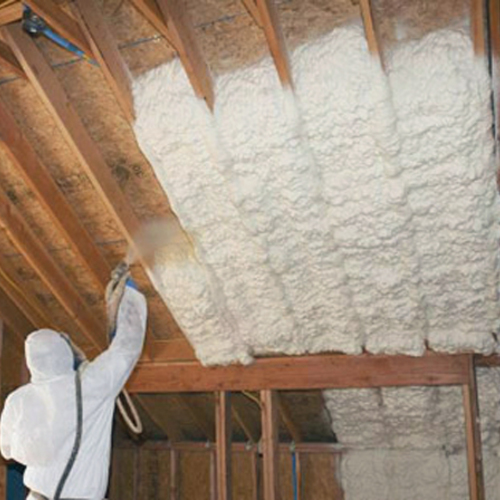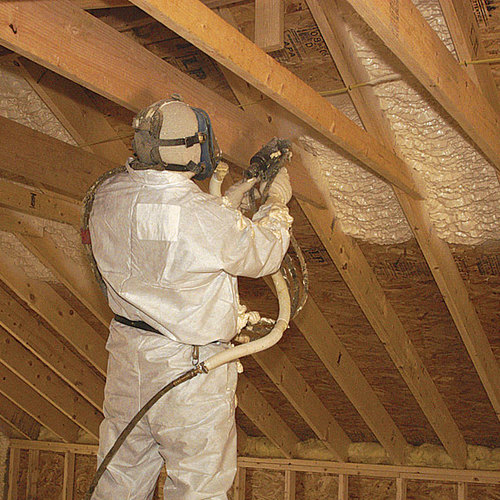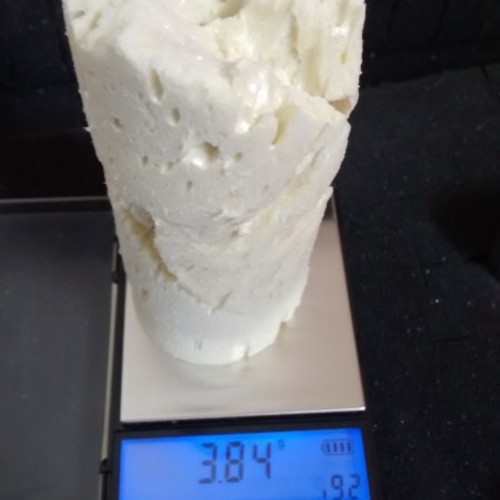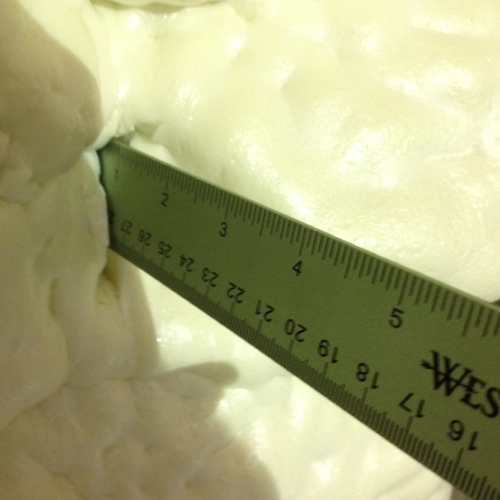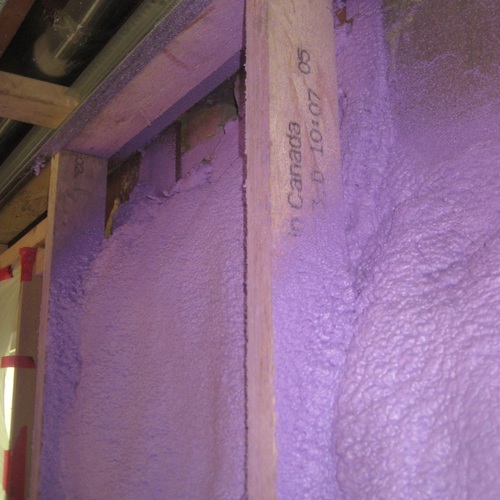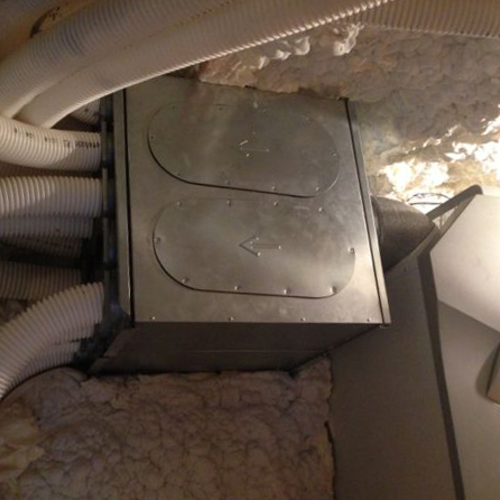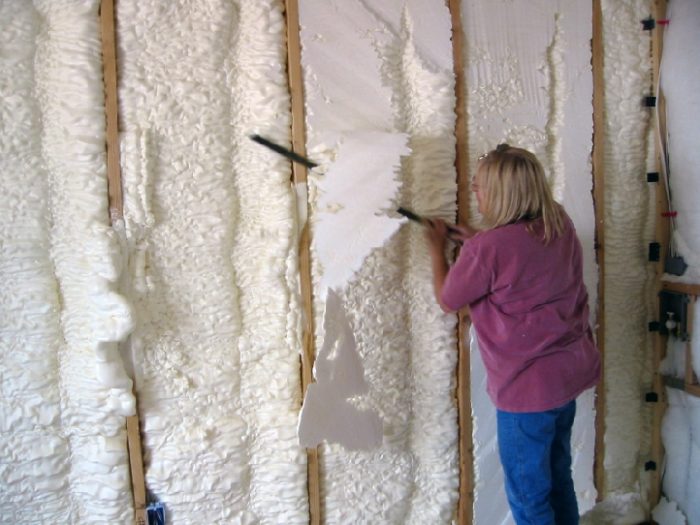
This is a list of the most important GBA articles on spray polyurethane foam insulation.
Spray polyurethane foam fills every nook and cranny of the cavities where it is installed and provides an excellent barrier to air leakage. Although this is an expensive type of insulation, many builders feel that its excellent performance qualities justify the higher cost. That said, some green builders are wary of spray foam, due to worries about the health effects its chemical components, the environmental damage associated with some of the blowing agents used to produce it, or reports of high humidity problems in attics insulated with open-cell spray foam.
If you are looking for an index that spans all categories, with a special focus on “how to” articles, check out this resource page: “How to do Everything.”
-
Spray Foam Insulation: Open and Closed Cell
Spray Foam Is the King of Insulations — Stellar Performance and a Price to Match UPDATED 4/11/2014
-
Air Leakage Through Spray Polyurethane Foam
Many builders use spray polyurethane foam as an air barrier, raising the question: How thick does the spray foam layer have to be to stop air flow? There's a follow-up question, of course: Is the answer different for open-cell spray foam than for closed-cell spray foam? As with most building science questions, there is a short answer and a long answer. The short answer is that closed-cell spray foam needs to be at least 1 or 1.5 inch thick to act as an air barrier, while open-cell spray foam needs to be between 3.0 and 5.5 inches thick to act as an air barrier.
-
High Humidity in Spray Foam Attics
I recently investigated an attic with spray foam insulation where we observed an interesting humidity pattern. We placed data loggers near the ridge and floor of the attic as well as in the living space and outdoors. The graph at below shows dew point data for the four locations. The really interesting part is the big difference in dew point between the highest and lowest points in the attic, shown by the red and green curves in the graph.
-
Open-Cell Spray Foam and Damp Roof Sheathing
UPDATED on July 8, 2015 Now that insulation contractors have been installing spray foam insulation on the underside of roof sheathing for several years, we’re beginning to accumulate anecdotes and data on successful installations and failed installations. The anecdotes and data are enough to provide a few rules of thumb for designers and builders who want to install spray foam on the underside of roof sheathing.
-
Next Generation Spray Foams Trickle into the Market
UPDATED on Feb. 9, 2017 Reformulated versions of spray polyurethane foam with only a tiny fraction of the global warming potential of their predecessors are getting easier to find. Texas-based Demilec, a manufacturer with distribution in both the U.S. and Canada, is among those offering a medium-density closed-cell spray foam made with a hydrofluoroolefin (HFO) blowing agent, the next generation of chemistry for the industry. Similar products are here or on the way.
-
Thermal Barriers and Ignition Barriers for Spray Foam
Do building codes require spray foam insulation to be protected with a layer of drywall or a comparable barrier for fire safety? There is no simple answer to the question, for several reasons. The first reason is that the code is complicated. The second reason is that the code is poorly written. The third reason is that the code is subject to interpretation by local code officials. And the fourth reason is that even when the code clearly requires spray foam to be protected with a thermal barrier or an ignition barrier, many code officials don’t bother to enforce the code.
-
Installing Closed-Cell Spray Foam Between Studs is a Waste
Open-cell spray foam has an R-value of about R-3.7 per inch, while closed-cell spray foam has an R-value that may be as high as R-6.5 per inch. If you want to install spray foam in a stud wall, and price is no object, then it would seem to make sense to specify closed-cell spray foam, right? Not necessarily.
-
Spray Foam Jobs With Lingering Odor Problems
Should spray polyurethane foam be installed in an occupied house? Hundreds of spray foam contractors around the country are happy to answer “Yes!” In almost all cases, these jobs end successfully: the spray foam improves the home’s thermal performance and the homeowner is happy.
-
It’s OK to Skimp On Insulation, Icynene Says
While energy experts often advise builders to exceed minimum code requirements for insulation, Icynene Incorporated, a manufacturer of open-cell spray polyurethane foam, is swimming against the tide. Surprisingly, Icynene is trying to convince builders to install less insulation than the code requires.
-
Spray Foam Insulation Is Not a Cure-All
Spray foam insulation is a great product. Homes insulated with it can be some of the most efficient and comfortable homes built. I've been in plenty of homes insulated with spray foam and can tell you that, when done well, those homes are airtight and comfortable. I’ve also seen homes where the spray foam was a waste of money.
-
Spray Foam in Cold Climates
Spray foam is a great tool for insulating and weatherizing. It can be applied to horizontal and vertical surfaces. Once it is cured, it can be the air barrier and vapor and thermal control layers (at least closed-cell foam can), and it provides some of the highest R-values per inch available. It slices! It dices! It makes great sushi!
-
Avoiding the Global Warming Impact of Insulation
Can insulation materials, which we use to save energy and help prevent climate change, cause greenhouse gas emissions? Yes, in two ways. First, it takes energy to produce and ship these materials—which we refer to as “embodied energy”—and using fossil fuels for these energy needs releases carbon dioxide (our most significant greenhouse gas). So in a sense, all insulation materials have embodied global warming potential (GWP).
-
Spraying Polyurethane Foam Over an Existing Roof
When Taya and Stephen Shoup's old tar-and-gravel roof began leaking, the couple hoped to find a replacement roofing that would be energy-conserving, leakproof, cost-competitive, and reasonably green. As the house's roof sheathing doubled as a finished ceiling, the old insulation was scant. They broiled in the summer and hemorrhaged money during the heating season.
-
Can Spray Foam Rot Your Roof?
Ice dams are a familiar problem in New England and other parts of the country where winters are long and cold. Snow on under-insulated and under-ventilated roofs melts, pools and refreezes to form a dam. Water backs up under the shingles and much to the horror of homeowners often finds its way inside the building. Spray foam polyurethane insulation is supposed to be a hedge against that problem. By forming an effective seal around rafters, and offering respectable R-values, foam should be blocking the migration of cold air into the roof where it can condense into water.
-
Does Open-Cell Spray Foam Really Rot Roofs?
Murmurs and hearsay about open-cell spray foam insulation have been gaining traction for a while. It rots roofs, people have told me. Not long ago, someone even told me that in Florida, roofing companies won't let their workers go up on roofs with open-cell spray foam because the roofs are so spongy, the guys fall right through. Open-cell spray foam is getting a bad reputation among some people in the construction industry. But is it deserved?
-
Getting Spray Foam Right
Spray foam insulation scares homeowners more than it should — although this is hardly surprising given the horror stories that abound on the Internet. While some of these stories are legitimate, more are based on skewed perceptions or flawed science. The truth is that spray foam is an incredibly effective insulation material and that failures are incredibly rare.
-
Joe Lstiburek on Spray Foam
Spray foam insulation evokes some interesting conversation among building scientists, construction professionals, environmentalists, and homeowners who have it in their homes. Many think it solves all problems, no matter how poorly it's installed. Some think it's helping to warm the planet and compromise the health of people and pets. In the middle are those who work with it regularly and see both the warts and the beauty of the product.
-
Prepping for Spray Foam
Spray-foam insulation is gaining popularity these days, and for good reason. Not only does it offer lots of R-value per inch, but it also air-seals the house. I’ve been building custom homes in North Carolina for more than 20 years, and I’ve been using spray-foam insulation for the past four. These days, all my projects get 8 in. to 12 in. of foam under the roof deck, and I often use foam to insulate walls and crawlspaces as well.
-
When Spray Foam Goes Bad
When spray foam goes bad, it’s hard not to feel a bit sick. Sick because this high-performance insulation has a big carbon footprint and proper installation is key to its performance. When it’s not installed correctly, it can get expensive for the client, the contractor, and the planet.
-
Spray Foam Insulation Does Not Work with All HVAC Systems
Earlier this year I got a question about a home that had spray foam insulation in the attic. There's nothing unusual about that. A lot of builders and homeowners are going with spray foam insulation because of the airtightness benefits. But then the questioner mentioned that the spray foam contractor had intentionally left big holes to the outside by not sealing the gable vents.
-
Spray Foam Insulation Is Not a Magic Bullet
In case you haven’t noticed, I’ve been pretty hard on batt insulation in the past. I feel that my complaints and concerns are well justified, but no matter which insulation product is chosen, it has to be installed properly or it just doesn’t work. Many people mistakenly believe (myself once among them) that spray polyurethane foam (SPF) is the perfect product, is always installed right, and tightens up homes every time.
-
Air Leaks in Homes Insulated With Spray Foam
If you’re retrofitting a vintage brick building without an air barrier, don’t count on the spray foam to create a perfect air seal. If you plan to use the spray foam as your air barrier, it's important to test your work before you cover it with drywall so you can seal any air leaks.
-
Weighing the Merits of Spray Foam Insulation
Scott Jacobs’ 1,100-square-foot Cape is a perfect candidate for an energy upgrade. The 90-year-old house is gutted, and Jacobs wants to insulate it well even if his budget is not unlimited. The house, located in Climate Zone 6, now has a 1/2-inch-thick layer of rigid foam on the exterior walls. Jacobs’ plan is to insulate the house from the inside with spray polyurethane foam.
-
Concerns When Using Spray Foam in Retrofits
Both closed- and open-cell spray foams are used widely to improve the thermal performance of existing homes. Installed properly, it’s hard to beat spray foam’s contribution to air tightness and R-value. But we need to keep our eyes on three important issues: quality installation, worker protection during installation, and safe re-entry times. How spray foams work
-
Spray Foam Insulated Homes Need Ventilation
Most installations of spray foam insulation, when properly installed, act as an air barrier. When you use it instead of the fluffy stuff (fiberglass, cellulose, cotton), a house will be more airtight. That's good. When a house is airtight, the nasties in the indoor air tend to stick around. Volatile organic compounds (VOCs), water vapor, odors, radon, and other stuff you don't want to immerse yourself in make the home's indoor air quality worse.
-
Does Spray Foam Insulation Off-Gas Poisonous Fumes?
Spray-foam insulation has become a weapon of choice for many builders and homeowners trying to build tight, energy efficient houses. And with its long list of attributes, that's no wonder. It fills tiny cracks and fissures in walls and roofs to form an effective air seal. The high R-values of closed-cell foam pack a lot of punch in a small space, and closed-cell versions can block the movement of moisture into wall and roof cavities. Expensive as it may be, it's at the top of its class.
